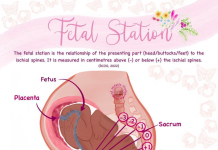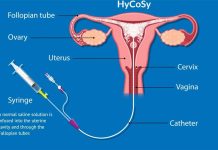The U.S. is one of the world’s wealthiest countries, with a net worth of $145 trillion. How much of that wealth is geared toward mothers raising the next generation of Americans? The answer is meek: zero dollars.
One big failing point in the U.S. for moms is the lack of maternal support at a federal level, particularly right after having a baby. Why doesn’t the U.S. government subsidize paid maternal leave for new moms?

This question is on many new mothers’ minds as they feel forced back into the workplace long before their physical and mental health are ready.
The Importance of Parental Leave
Research surrounding the psychological benefits of paid paternal leave clearly illustrates its importance. Yet, these benefits do not align with the U.S.’s current policies.
The top cited benefits of paid parental leave include:
- Giving time for what’s most important: It allows adequate time for the family to bond, the mother to heal, and the father to be more involved.
- Better stress management: Adequate leave is correlated to reduced stress, secondary to better financial stability and job security.
- Better birth outcomes: Less overall stress correlates to fewer pre-term births and lower infant mortality.
- Healthy babies: Maternal leave allows a mother to breastfeed her baby for longer, which correlates to better long-term health and immunity.
The Build Back Better Act Flop
With all the great benefits of parental leave, getting the proper legislation should be straightforward. Yet, many American parents and legislators have fought for parental leave rights for over a century with no such luck. The most recent attempt was the Build Back Better Act under the Biden administration.
The U.S. House of Representatives passed the Build Better Back Act in November 2021.
Unfortunately, it stalled in the Senate and was eventually dropped due to disagreement on the amount of paid leave. The Act was to allot four weeks of paid and twelve weeks of leave without fear of losing a job or health insurance.
Because of this failure, parental leave continues to fall on the shoulders of individual states and employers. Unfortunately, only 1 in 4 employees in the private sector have access to parental leave benefits.
Thankfully, eleven states have taken their own initiative, with eleven passing paid family and medical leave laws. These include California, Colorado, Connecticut, Delaware, Massachusetts, Maryland, New Jersey, New York, Oregon, Rhode Island, Washington State, and Washington, D.C.
Taking Notes From Countries With The Best Maternal Leave
Many countries offer excellent parental leave benefits because they recognize how critical the health of their moms, dad, and babies are in their first years of life.
According to a Business.org report, outside of the U.S., the minimum time for paid leave is six weeks. The average total time off ranges significantly from 6 weeks to over 60 weeks in countries like Sweden and Estonia. Overall, most women could take an average of 18 weeks from work, with at least some of the time being subsidized and a job position guaranteed when they return.
What is federally mandated in the U.S.? Zero weeks of unpaid leave is required. A mother may be eligible for up to 12 weeks of unpaid leave if they qualify.
What Do Moms Outside the U.S. Have to Say
It’s unlikely to find a mom complaining about her extended maternal leave benefits in countries prioritizing maternal health and leave. Mothers in countries with extended maternal benefits cannot fathom how mothers in the U.S. do it.
Nadia of This Mom is on Fire gave birth and raised two young children in Canada. She was grateful to take a full year off without worrying about losing her job. When asked if she felt 52 weeks was enough, she answered, “It’s never enough time, but we recognize that it is a lot longer than many other countries.”
Katie Trant of Hey Nutrition Lady has positive reports about her experience raising young children in Sweden while taking 18 months of leave. “I think having the time at home when my kids were small and I was sleep deprived was really important. I can’t imagine having to go back to work when they’re still so tiny!”
As an American, after looking at the cost of birth in the U.S. while pregnant, I decided to give birth to my first daughter in the Czech Republic. There, the standard is to take 1 to 3 years off. Many moms and pediatric nurses I talked to couldn’t comprehend why I’d consider returning to work in the U.S. at three months postpartum. Thankfully, I had a choice and decided to stay home with my baby- but most U.S. mothers don’t have this choice.
Adding Insult to Injury
Just in case the lack of paid maternity leave wasn’t enough, it’s also essential to consider the financial repercussions of having a baby in the U.S. Unlike the other countries listed above; the U.S. does not have universal healthcare in place, adding an additional burden to expecting mothers.
Pregnant women who give birth incur an average bill of $19,000, with around $3,000 being out-of-pocket costs. These numbers can rise exponentially for women without insurance or a plan with a high deductible.
When the cost of birth and postpartum care is stacked on top of unpaid maternity leave and fear of job loss, this is a recipe for stress. Sadly, at a time when a mom should be focusing on healing and bonding, they are worried about their finances. Thus, they are forced away from their babies and back to work so that they can stay afloat and pay enormous medical bills.
Raising Healthy Babies Is an Essential Job
Other countries have recognized the economic importance of raising children in healthy homes. It’s seen as an investment in a resilient future for the next generation. When will the U.S. step up and support their mothers and youngest? With continued legislative pushes, only time will tell.




